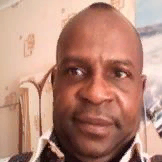
Bassey B. Echeng
Work place: Department of Mathematics /Statistics, Cross River University of Technology, 540252, Calabar, Nigeria
E-mail: echengba.rexson@yahoo.com
Website:
Research Interests: Computer Science & Information Technology, Solid Modeling, Numerical Analysis
Biography
Bassey Echeng B., a Computational Mathematics and Informatics specialist from Kuban State University, Krasnodar Russia and M.Sc. in Industrial Mathematics, Federal University of Agriculture, Makurdi, Nigeria and B.Sc in Mathematic/Statistics, University of Calabar, Calabar, Nigeria. He is a lecturer and presently the Co-coordinator – Head of Pre-degree program, Cross River University of Technology, Calabar, Nigeria. Published more than 24 papers in reputed journals, including monographs’ and author of textbooks. Research interests include but not limited to: Mathematical modeling, numerical methods; simulation analysis, mathematical methods, computer technology and programming.
Author Articles
Optimal Control Dynamics: Control Interventions for Eradication of Ebola Virus Infection
By Bassey B. Echeng Bassey Delphine Rexson
DOI: https://doi.org/10.5815/ijmsc.2018.03.04, Pub. Date: 8 Jul. 2018
In affirmation of the existence of control interventions for the eradication of Ebola virus infection as a remedy to complete lack of outright medical cure, the present study seek and formulated using continuous ordinary differential equations an extended BEB-SEIR 4-Dimensional mathematical Ebola dynamic model vested with the scope of establishing the epidemiological impact of identified structured Ebola control measures. Derived model was presented as an optimal control problem subjected to structured dual treatment functions. Moreso, following the validity of model state components as representatives of living organisms and the establishment of existence of boundedness of solutions; we performed our analysis using classical Pontryagin’s maximum principle with which the optimality system of the model was established. Numerical simulations of derived model via Runge-Kutter of order 4 in a Mathcad surface were conducted. Result clearly indicated enhanced impact of intermediary and secondary control interventions as Ebola virus treatment functions with high significant maximization of susceptible population devoid of Ebola infection. Both the exposed and infectious classes were maximally reduced to near zero with possibilities of achieving complete eradication if time interval could be extended exceeding the of Ebola life-cycle. Furthermore, recovery rate of removed class justified the formulation and application of the model. The study therefore suggests further articulation of the model to account for possible intracellular delay in the biological mechanism.
[...] Read more.Other Articles
Subscribe to receive issue release notifications and newsletters from MECS Press journals